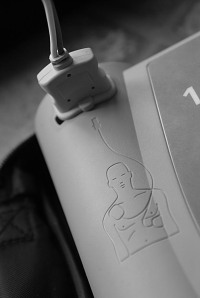Treatment of non-traumatic out-of-hospital cardiac arrest with active compression decompression cardiopulmonary resuscitation plus an impedance threshold device
Resuscitation. Volume 84, Issue 9, September 2013, Pages 1214–1222
A recent out-of-hospital cardiac arrest (OHCA) clinical trial showed improved survival to hospital discharge (HD) with favorable neurologic function for patients with cardiac arrest of cardiac origin treated with active compression decompression cardiopulmonary resuscitation (CPR) plus an impedance threshold device (ACD + ICD) versus standard (S) CPR. The current analysis examined whether treatment with ACD + ITD is more effective than standard (S-CPR) for all cardiac arrests of non-traumatic origin, regardless of the etiology.
Methods
This is a secondary analysis of data from a randomized, prospective, multicenter, intention-to-treat, OHCA clinical trial. Adults with presumed non-traumatic cardiac arrest were enrolled and followed for one year post arrest. The primary endpoint was survival to hospital discharge (HD) with favorable neurologic function (Modified Rankin Scale score ≤ 3).
Results
Between October 2005 and July 2009, 2738 patients were enrolled (S-CPR = 1335; ACD + ITD = 1403). Survival to HD with favorable neurologic function was greater with ACD + ITD compared with S-CPR: 7.9% versus 5.7%, (OR 1.42, 95% CI 1.04, 1.95, p = 0.027). One-year survival was also greater: 7.9% versus 5.7%, (OR 1.43, 95% CI 1.04, 1.96, p = 0.026). Nearly all survivors in both groups had returned to their baseline neurological function by one year. Major adverse event rates were similar between groups.
Conclusions
Treatment of out-of-hospital non-traumatic cardiac arrest patients with ACD + ITD resulted in a significant increase in survival to hospital discharge with favourable neurological function when compared with S-CPR. A significant increase survival rates was observed up to one year after arrest in subjects treated with ACD + ITD, regardless of the etiology of the cardiac arrest.
http://www.sciencedirect.com/science/article/pii/S0300957213002657


